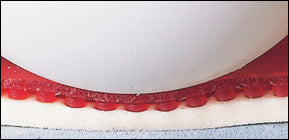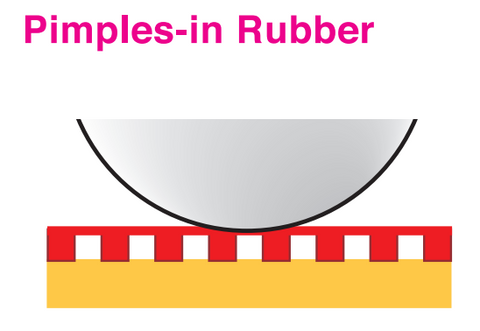
How To Choose a Table Tennis Rubber
How To Choose a Table Tennis Rubber
Once you have chosen a blade that suits your playing style, you are ready to move on to the next step which is to choose a rubber.
Before we begin, here are a few things you should know!
-
RED/BLACK COLOR
According to the International Table Tennis Federation (ITTF), one side of the racket must be red and the other side black. This means you will need to purchase a red rubber, and a black rubber if you intend to participate in authorized table tennis events.
-
ITTF LOGO
Only rubbers authorized by the IFFT can be used in authorized events. Rubbers that are authorized have an ITTF logo engraved on it. The ITTF have a list of authorized rubbers which is updated frequently, so it is best to check before you purchase a rubber.
Check out the list here [ LARC 2018A (List of Authorized Racket Coverings) ]
Moving on with the guide, there are 3 things you should consider when choosing a rubber.
-
RUBBER TYPES
You may have noticed that rubbers have these little projections on one side. These are called pips/pimples and they affect the spin of the ball.
Inverted/Reverse Pips

This type of rubber has the pips facing in and the flat smooth side facing outwards. Therefore, you use the smooth side to strike the ball. This type of rubber is the most common one used as it gives good control and allows players to develop their stroke. Inverted rubbers have a large contact area which allows the player to easily exert spin on the ball. As such, it is suitable for beginners and all-rounded players.
Short Pips-Out

This type of rubber has short pips facing out and the flat smooth side facing inwards. Therefore, you use the short pip side to strike the ball. This type of rubber is suitable for players who have a fast blocking/ counter attacking game. This rubber is not easily affected by the opponent’s spin due to its small contact area with the ball, allowing you to easily return an opponent's spin shot.
Long Pips-Out

This type of rubber has long pips facing out and the flat smooth side facing inwards. Therefore, you use the long pip side to strike the ball. This type of rubber is suitable for defensive players as it slows down the speed of the ball and can counter the spin on your opponent's shots.
Short and Long Pips without Sponge

This type of rubber has the pips facing out and the flat smooth side facing inwards. Therefore you use the pip side to strike the ball. This rubber does not have a sponge layer underneath, resulting in a lighter racket with less elasticity. Thus rubber is suitable for defensive players who want to drastically cut the speed of your opponent's shots, slowing down the rally.
Anti-spin Rubber
This type of rubber is similar to the inverted rubber as it has the pips facing inwards and the flat smooth size facing out. Therefore, you use the pip side to strike the ball. Anti-spin rubbers are generally hard with sponges ranging from medium soft to extremely soft which slows the ball down. They also have less friction on the rubber effectively, cancelling the spin on your opponent's shots.
-
Sponge Thickness

The sponge layer is an area between the rubber and the wood which acts as a trampoline. This layer should already come attached to the rubber sheet when you purchase a rubber so you don't need to do any installation.
Thinner sponges will be less “springy” and have a hard feel, as the ball will generally sink to the wood surface, producing less spin and speed. Thin sponges are suited for defensive play styles as it is good for slowing down the speed of your opponent's shots as well as the amount of spin on it.
Thicker sponges will have a soft feel and will be faster and provide more spin as the ball will sink deep into the sponge layer catapulting it outward with tremendous velocity and increased spin. Thick sponges are suited for attacking play styles as it provides good speed and spin for looping and driving shots.
As a general rule of thumb, the thicker the sponge, the more offensive it is.
i.e. provides more speed and spin.
Many rubbers come in a variety of sponge thickness to accommodate different players.
eg. Butterfly Tenergy 05 comes in 1.7, 1.9, and 2.1mm sponge thickness.
If you are unsure about which thickness to choose, 1.9mm sponge is always a safe bet.
-
Sponge Density
Sponge density is often overlooked as people tend to focus more on the rubber. When we talk about the density, we are referring to the hardness of the sponge. High density sponges are harder, while low density sponges are softer.
Denser sponges have more stored energy but also require more racket speed to compress the sponge and release this energy. Therefore, players who swing harder prefer the harder sponges.
The all-round player or players with shorter strokes will prefer sponges with medium or softer sponges.
Check out our selections of table tennis rubbers here









